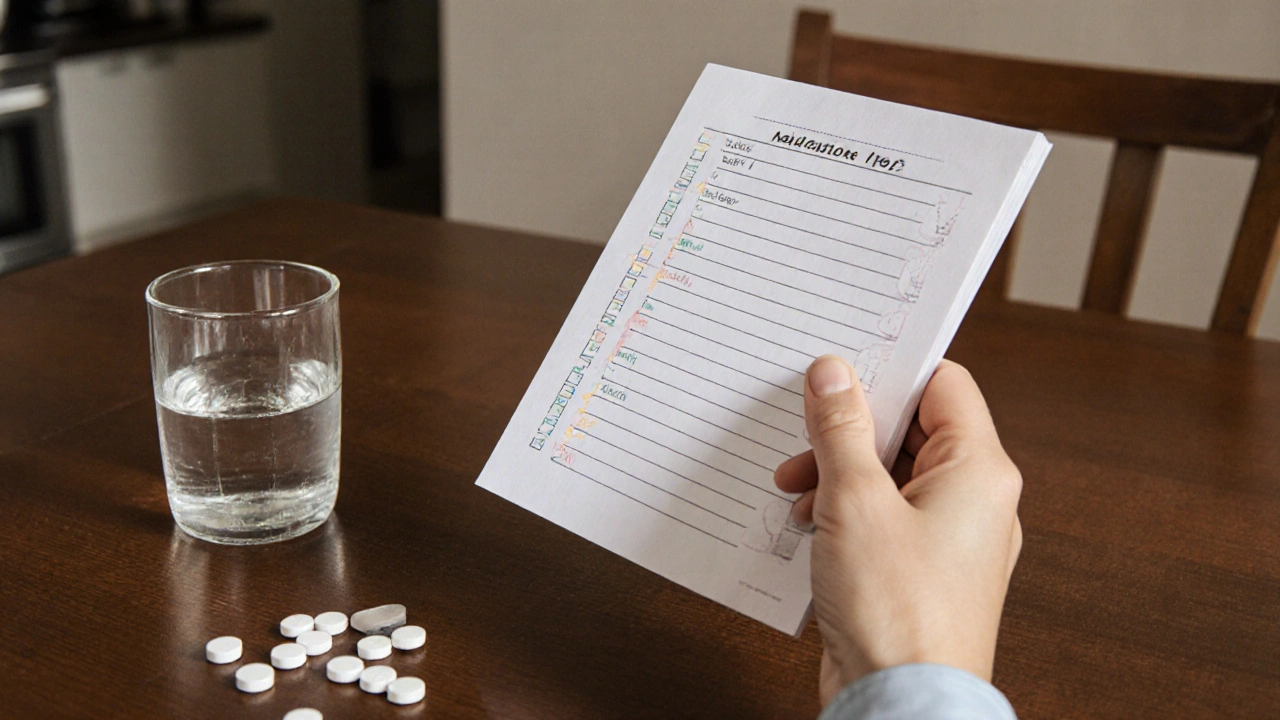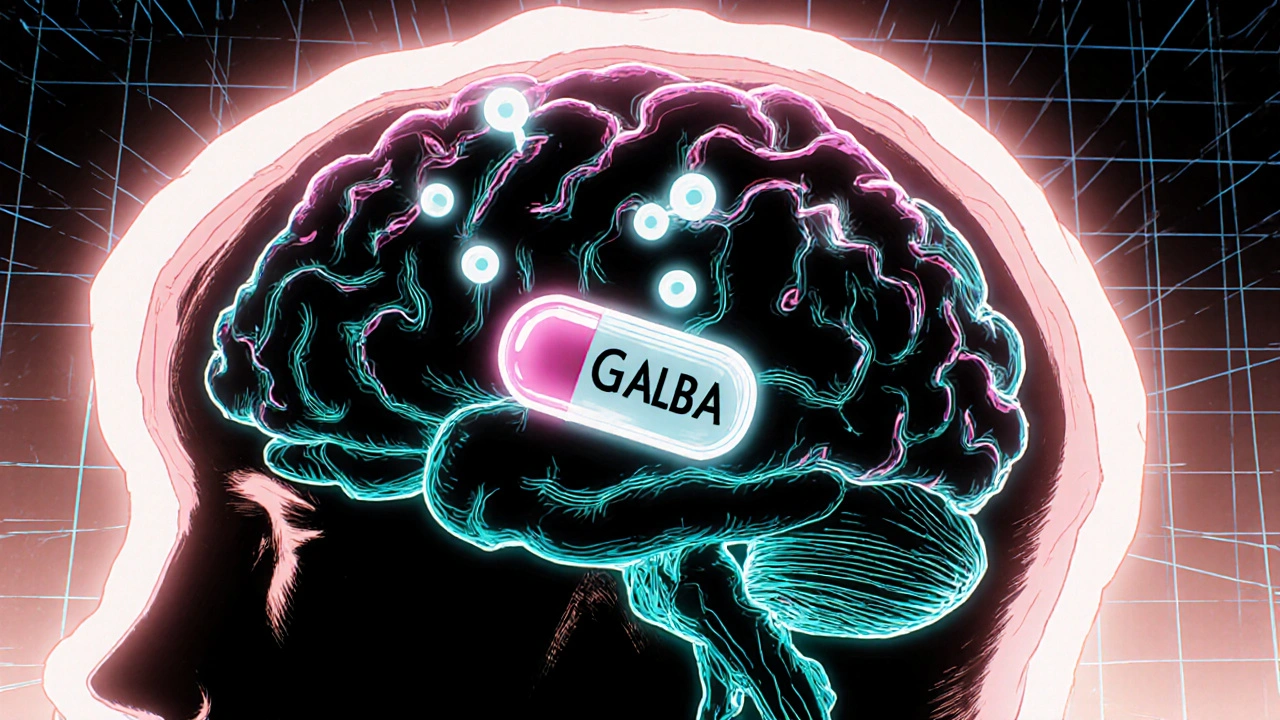Divalproex Drug Interaction Checker
Check for Interactions
Select medications you're taking with divalproex to see potential interactions and risks.
Key Takeaways
- Know the five drug classes that most often clash with divalproex.
- Watch for subtle signs like unexplained bruising or increased drowsiness.
- Never start, stop, or change any medication without checking your doctor first.
- Alcohol and certain over‑the‑counter pain relievers can boost side‑effects.
- Keep an up‑to‑date list of everything you take and share it at each appointment.
Divalproex is an extended‑release formulation of valproic acid prescribed for epilepsy, bipolar disorder, and migraine prevention. When it mixes with the wrong substances, the result can be a spike in toxicity, reduced seizure control, or unexpected bleeding. This guide walks you through the most common culprits, why they matter, and practical steps to stay safe.
What Divalproex Does in Your Body
Divalproex works by increasing the amount of gamma‑aminobutyric acid (GABA) in the brain, which helps calm over‑active nerve signals. It also blocks sodium channels, stabilizing cell membranes. Because it touches the liver’s enzyme system-especially CYP2C9 and CYP2C19-it’s a prime candidate for drug‑drug interactions. Knowing the pathways helps you anticipate which other meds might interfere.
Why Interactions Can Be Dangerous
When two drugs share the same metabolic route, they can either compete (raising levels) or speed each other up (dropping levels). With divalproex, a higher blood concentration can cause liver injury, pancreatitis, or severe clotting problems. A lower concentration may trigger breakthrough seizures or mood swings. The stakes are high enough that a simple headache pill could tip the balance.

Major Interaction Categories to Watch
Below are the drug families you should flag when you’re on divalproex.
- Warfarin an anticoagulant that thins blood by inhibiting vitamin K. Divalproex can boost warfarin’s effect, leading to dangerous bleeding.
- Aspirin a non‑steroidal anti‑inflammatory drug (NSAID) that also thins blood. When combined, the risk of gastrointestinal bleeding rises sharply.
- Carbamazepine another anti‑seizure medication that induces liver enzymes. It can lower divalproex levels, reducing seizure protection.
- Lamotrigine an antiepileptic often paired with divalproex. Divalproex slows lamotrigine clearance, raising the chance of rash or Stevens‑Johnson syndrome.
- Hormonal contraceptives birth‑control pills containing estrogen or progestin. Divalproex can reduce their effectiveness, leading to unintended pregnancy.
- Alcohol. Even moderate drinking can increase the sedative effect of divalproex and strain the liver.
- OTC pain relievers like ibuprofen or naproxen (other NSAIDs) can add to bleeding risk when taken with warfarin‑type drugs.
Spotting an Interaction Early
Because some signs creep in slowly, keep an eye on these red flags:
- Unexplained bruising or nosebleeds.
- New or worsening fatigue, dizziness, or slurred speech.
- Gastrointestinal upset that feels more than a typical side effect.
- Changes in seizure frequency or mood swings.
- Irregular menstrual cycles or missed periods while on hormonal birth control.
If any of these appear after starting a new medication, call your clinician immediately.

Checklist: Keep Your Medication List Safe
- Write down every prescription, over‑the‑counter drug, supplement, and herbal product.
- Note the dose, timing, and reason for each item.
- Review the list with your pharmacist every 6months.
- Ask your doctor before adding anything-especially antibiotics, antifungals, or mood stabilizers.
- Carry a small card with your most critical meds (including divalproex) for emergencies.
Managing Risks with Your Healthcare Team
Open communication is the best defense. During appointments, bring up:
- Any recent lab work-especially liver function tests and blood clotting panels.
- Plans to start or stop alcohol consumption.
- Whether you’re using a hormonal contraceptive and if you need a backup method.
- All over‑the‑counter or herbal products you haven’t mentioned yet.
Doctors may order blood levels of divalproex, adjust doses, or switch you to a medication with fewer interaction risks.

Quick Reference Table
| Interacting Substance | Typical Effect on Divalproex | Action to Take |
|---|---|---|
| Warfarin | Increases bleeding risk | Monitor INR closely; consider alternative anticoagulant |
| Aspirin / NSAIDs | Raises gastrointestinal bleed risk | Use acetaminophen for pain if possible |
| Carbamazepine | Lowers divalproex levels | Dose adjustment or switch anti‑seizure drug |
| Lamotrigine | Elevates lamotrigine levels → rash risk | Start lamotrigine at low dose, monitor skin |
| Estrogen‑containing contraceptives | Reduces contraceptive efficacy | Add barrier method or switch to progestin‑only |
| Alcohol | Boosts sedation, liver strain | Limit or avoid alcohol while on therapy |
Frequently Asked Questions
Can I take ibuprofen with divalproex?
Occasional ibuprofen is usually okay, but combine it with caution if you also use warfarin or aspirin, because the trio raises bleed risk. Check with your pharmacist for the safest pain reliever.
Why does divalproex affect birth‑control pills?
Divalproex speeds up the breakdown of estrogen in the liver, lowering the hormone levels needed to prevent ovulation. This can make combined pills less reliable, so a backup method is recommended.
What lab tests should I have while on divalproex?
Routine liver function tests (ALT, AST), a complete blood count, and, if you’re on an anticoagulant, INR checks are standard. Your doctor may also order serum divalproex levels every few months.
Is it safe to drink wine occasionally?
Small amounts (one glass) are unlikely to cause serious issues, but regular drinking can worsen sedation and strain the liver. If you notice increased drowsiness, cut back or stop.
How do I know if my divalproex level is too high?
Symptoms include tremor, confusion, nausea, vomiting, or unusual bruising. A blood test can confirm the level; if it’s above the therapeutic range (50‑100µg/mL for most adults), your doctor will adjust the dose.

Virginia Dominguez Gonzales
Hey there, champion! Remember that staying on top of your medication list is like training for a marathon – consistency wins the race. Every time you jot down a new pill or supplement, you’re building a shield against hidden dangers. Keep that list updated, share it with every doctor, and don’t let a single over‑the‑counter pain reliever slip through the cracks. If you ever feel a strange bruise or extra drowsiness, treat it as a warning flare and call your healthcare team right away. You’ve got the power to stay safe – keep marching forward!
Joanna Mensch
Sometimes I wonder if the pharma giants don’t want us to see how easily a simple aspirin can tip the balance when combined with divalproex. They hide the risks behind fancy charts, hoping we’ll trust the label without digging deeper. It feels like they’re feeding us a recipe for hidden bleeding, especially when warfarin is in the mix. Keep your eyes open and question every new prescription – the truth is rarely as clean as they present it.
Nickolas Mark Ewald
Always tell your doctor about any new meds.
Russell Abelido
Reading through this guide feels like stepping into a labyrinth of hidden dangers, where each doorway could either protect you or unleash a cascade of problems. Divalproex, while a lifesaver for seizures and mood swings, sits at the crossroads of countless metabolic pathways, making it a magnet for unwanted interactions. When you pair it with warfarin, the blood's ability to clot becomes a fragile glass house ready to shatter at the slightest tremor. Adding aspirin or any NSAID to that mix is like pouring gasoline on a smoldering fire, turning minor bruises into serious bleeds. Even something as seemingly innocent as ibuprofen can tip the scale if you’re already on anticoagulants, because the liver enzymes start juggling more than they can handle. Alcohol, that seductive companion, not only amplifies sedation but also strains the liver, which is already working overtime to process divalproex. The enzyme CYP2C9, the very workhorse that breaks down these drugs, can be hijacked by carbamazepine, leaving you vulnerable to breakthrough seizures. On the flip side, lamotrigine lingers longer in your system when divalproex slows its clearance, raising the specter of a dangerous rash or even Stevens‑Johnson syndrome. Hormonal birth‑control pills? They get metabolized faster, meaning a missed pill could become a missed pregnancy prevention, and that’s a risk many overlook. The quiet symptoms-unexplained bruising, lingering fatigue, or a sudden dip in mood-are the body’s SOS signals, begging you to pause and reassess. If you notice any of these, treat them as urgent alerts, not just mild side effects. Regular blood work, especially liver panels and INR checks, becomes your compass in this storm, pointing you toward safety or danger. Communicating openly with your healthcare team isn’t just courteous; it’s a lifeline that can prevent a cascade of complications. Carry a card listing your key medications, including divalproex, and hand it to any new doctor you see. Remember, knowledge is the armor that turns a potential hazard into a manageable part of your daily routine.
Steve Holmes
Wow!!! The way enzymes compete for the same pathway is like a traffic jam at rush hour, cars honking and drivers swerving, and it really shows why adding a new medicine can feel like tossing a wrench into the mix!!! It’s crazy how a tiny dose of carbamazepine can knock the speed of divalproex down, leaving you vulnerable to seizures, and at the same time, a little aspirin can push the bleed risk up like a balloon ready to pop!!! Keep an eye on those lab results, especially the liver enzymes, because they’re the dashboard lights telling you if something’s overheating!!!
Tom Green
Folks, think of your medication list as a shared road map – when we all keep it current, everyone from the pharmacist to the neurologist can navigate safely. If you spot an OTC pain reliever you haven’t mentioned, add it right away; those little details can make a big difference. It’s also worth double‑checking that your birth‑control method still lines up with your current meds, because divalproex can change the game. And don’t forget to schedule those routine liver checks – they’re the quiet guardians watching over your health. Let’s keep the conversation open and supportive, because staying informed is a team sport.
Emily Rankin
Imagine your body as a symphony, each medication a distinct instrument playing its part in perfect harmony. When divalproex joins the orchestra, it adds a deep, steady bass that steadies the tempo of seizures and mood swings. Yet, if a discordant note like warfarin or a sudden splash of alcohol barges in, the melody can turn into a jarring clash that leaves you breathless. The beauty lies in the conductor’s hand – your doctor – who can adjust the volume, swap a troublesome violin for a softer flute, and keep the music flowing. Remember, every bruise or unexpected fatigue is a subtle cue from the ensemble that something is off‑key. By keeping your medication list up‑to‑date, you hand the conductor a precise score, reducing the chance of a missed note. Regular lab tests are like tuning sessions, ensuring each instrument stays in pitch. Stay optimistic, because with vigilance you can transform potential chaos into a calming rhythm that carries you forward. Celebrate each small victory – a day without seizures, a night of restful sleep – as the triumphant crescendo of your careful stewardship.
genevieve gaudet
so like, i read this and i cant help but think bout how every culture has its own med list stories – some call it the "medicine notebook," othrs just trust the doc. but honestly, writing it down on your phone or a piece of paper is a universal hack, no matter where ur from. i always forget to note the herbal tea i sip, but that stuff can also mess with divalproex. keep it real, keep the list, and share it – it's like passing down wisdom from grandma to grandkid, just in a modern way.
Patricia Echegaray
Don't be fooled by the mainstream narrative that says all these drug combos are "safe if monitored." The real agenda is to keep us chained to a system that profits while our blood thins and our livers crumble. They slip sneaky NSAIDs into the mix, hoping we won't notice the slow bleed until it's too late. It's a calculated assault on our freedom, and we need to fight back by demanding full transparency on every interaction. Stand up, check every label, and never let a pill be your silent enemy.